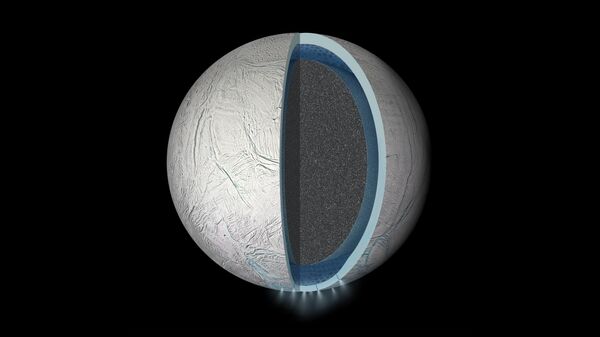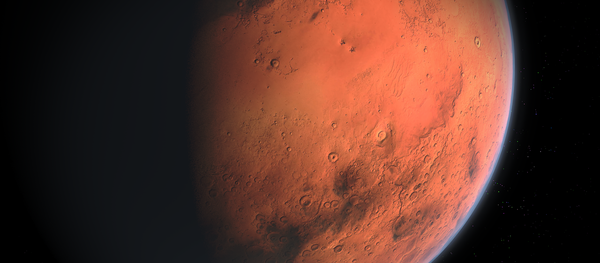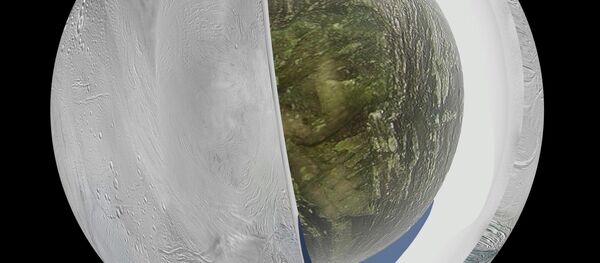In April, NASA announced that their Cassini probe had taken a sample from a water plume bursting from a crack in Enceladus' ice surface. The plume contained signs of organic life, such as liquid hydrogen, carbon dioxide and methane. Although they weren't certain, NASA announced that they believed it possible for simple life to live on the ocean floor of Enceladus, eating methane that emits from thermal vents.
Cassini doesn't have enough fuel to make another sojourn to Enceladus, but if NASA sends a second probe to take a sample from one of the moon's water jets, they want to be able to confirm whether or not there were microbes in the sample.
Any such plan would face numerous obstacles. The microbes could be destroyed during their journey up, or in the probe's collection process. But worst of all, it may be much more difficult than expected to identify the microbes as living things.
"It's harder to distinguish between a microbe and a speck of dust than you'd think," said Jay Nadeau, research professor of medical engineering and aerospace in the Division of Engineering and Applied Science at Caltech, to phys.org. "The hardest thing about bacteria is that they just don't have a lot of cellular features. Sometimes telling the difference between them and sand grains is very difficult."
"You have to differentiate between Brownian motion, which is the random motion of matter, and the intentional, self-directed motion of a living organism." Nadeau explained that the movements of simple organisms can give them unique biosignatures that would allow scientists to identify them as living things instead of more traditional methods such as chemical tests.
Thus, Nadeau's paper proposes the use of a device called a digital holographic microscope. The device uses a laser to bounce light off an object, and then it examines the light that is returned. By studying the scattering and phase of the light sample, the microscope can then reconstruct a 3D version of the image.
"Digital holographic microscopy allows you to see and track even the tiniest of motions," Nadeau said. She added that the device can also interact with fluorescent dyes that only bind with specific life indicators (such as lipids, nucleic acids, proteins or sugars). This can tell the scientist "what the microbes are made of."
Enceladus is the ideal candidate to perfect these techniques, Nadeau says. It is relatively close to Earth (on a cosmic scale, that is) and the water jets that periodically fly miles above the moon's surface mean that there's no need for a costly, finicky landing. Instead, a probe can simply pass through one of the jets and collect another sample, then use its digital holographic microscope to identify microbes.
Already, Nadeau and her team have tested the microscope on frigid, low-bacteria water samples collected from the Arctic Ocean. The microscope was able to identify the presence of life in a density of 1,000 cells per milliliter — one of the lowest microbe population densities one is likely to find on Earth. They intend to test it again, this time on water samples from Antarctica.
Nadeau says that her microscope is also fairly simple, with few moving parts, and can test samples with impressive speed (one milliliter per hour). These properties make it ideal for astrobiology.







